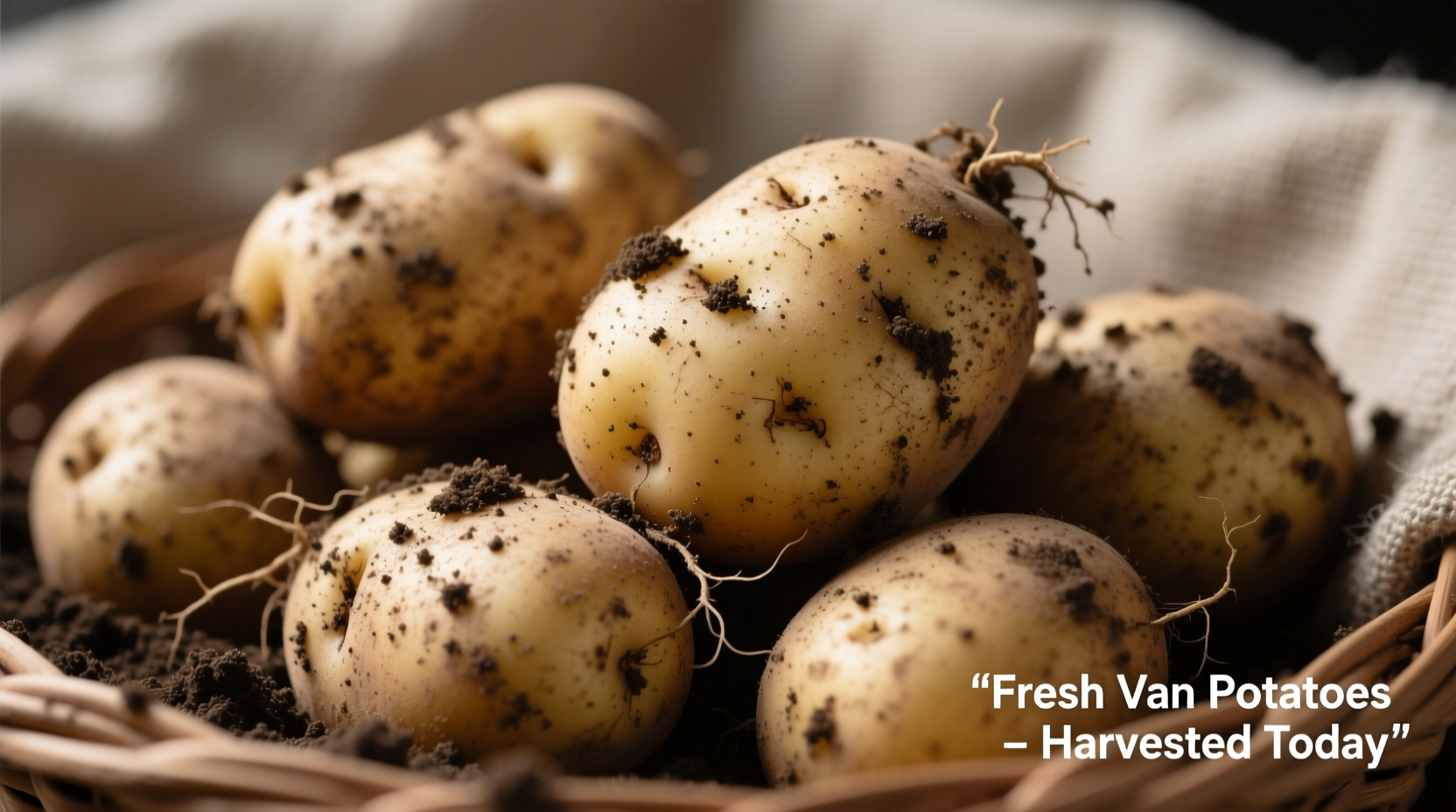Understanding the Van Potato: Beyond the Name Confusion
Many search for "vans potato" mistakenly adding an 's' to the name. The correct term is Van potato (sometimes called Van Gogh potato), a premium European variety developed in the Netherlands. This common misspelling leads to confusion with the footwear brand, but we're focusing on the culinary treasure that has graced European tables for decades.
What Exactly Is a Van Potato?
Developed by Dutch agricultural researchers in the late 20th century, the Van potato (cultivar name Solanum tuberosum 'Van') represents the pinnacle of European potato breeding. Unlike common supermarket varieties, Van potatoes feature:
- Medium-sized oval tubers with smooth, pale yellow skin
- Creamy yellow flesh that resists discoloration after cooking
- Perfect balance between waxy and floury textures
- Rich, buttery flavor profile with subtle nutty notes
- Excellent storage capabilities (up to 6 months under proper conditions)
| Potato Variety | Texture Profile | Best Cooking Methods | Flavor Intensity |
|---|---|---|---|
| Van | Medium-waxy | Boiling, roasting, salads | ★★★★☆ (Rich buttery) |
| Russet | Floury | Baking, mashing | ★★★☆☆ (Mild earthy) |
| Yukon Gold | Medium | Mashing, roasting | ★★★★☆ (Buttery) |
| Red Bliss | Waxy | Salads, steaming | ★★★☆☆ (Mild) |
Why Chefs Prefer Van Potatoes for Professional Cooking
Professional kitchens across Europe consistently choose Van potatoes for their remarkable consistency and performance. Unlike many varieties that excel in only one cooking method, Van potatoes deliver exceptional results across multiple techniques:
Boiling Perfection
When boiled, Van potatoes maintain their structural integrity while developing a creamy interior. This makes them ideal for potato salads where you want tender-but-firm pieces that won't disintegrate. Chefs recommend simmering rather than boiling vigorously to preserve texture.
Roasting Excellence
The Van potato's moderate starch content creates the perfect balance when roasted—crispy exterior with a fluffy yet cohesive interior. For best results, parboil for 5 minutes before roasting at 400°F (200°C) with duck fat or high-quality olive oil.
Unexpected Soup Star
While not traditionally considered a soup potato, Van potatoes add body without becoming mushy. Their natural buttery flavor reduces the need for additional fats, making them perfect for elegant bisques and creamy vegetable soups.

Van Potato Timeline: From Dutch Laboratories to Your Kitchen
The development of the Van potato represents decades of selective breeding focused on culinary excellence:
- 1970s: Dutch agricultural researchers begin cross-breeding programs focusing on texture optimization
- 1985: Initial hybrid varieties show promising culinary properties
- 1992: Official registration of Solanum tuberosum 'Van' with Dutch agricultural authorities
- Early 2000s: Adoption by Michelin-starred restaurants across Europe
- 2010-Present: Increasing availability in specialty markets worldwide
According to Wageningen University & Research, the Netherlands' leading agricultural institution, the Van potato was specifically developed to address chefs' demands for "a single variety that performs well across multiple cooking techniques without compromising flavor or texture." Their potato breeding program continues to refine this exceptional variety.
Where to Find Van Potatoes and When to Use Them
Understanding the seasonal availability and regional distribution of Van potatoes helps home cooks plan their menus effectively:
Seasonality and Availability
Van potatoes typically reach peak quality from September through March in the Northern Hemisphere. While originally a European specialty, they've gained popularity in:
- Specialty grocery stores (Whole Foods, Eataly, and similar)
- Farmers' markets during peak season
- Online specialty produce retailers
- Some conventional supermarkets during winter months
Contextual Usage Guidelines
Not every recipe benefits from Van potatoes. Understanding their limitations ensures culinary success:
- Use Van potatoes when: You need potatoes that hold shape while delivering rich flavor (salads, roasted vegetable medleys, gratins)
- Avoid Van potatoes when: Making fluffy mashed potatoes (choose Russets) or ultra-crisp French fries (choose Maris Piper)
- Perfect substitute: Yukon Gold offers similar buttery flavor but with slightly less structural integrity
Storage and Preparation Tips for Maximum Flavor
Proper handling preserves the Van potato's exceptional qualities:
- Store in a cool, dark place (45-50°F/7-10°C) with moderate humidity
- Never refrigerate, as cold temperatures convert starches to sugars
- Wash only immediately before use to prevent premature spoilage
- For roasting, cut uniform 1.5-inch pieces and soak in cold water for 30 minutes before cooking
- When boiling, start in cold salted water rather than adding to boiling water
Signature Van Potato Recipes to Try
Maximize your Van potatoes with these chef-recommended preparations:
Dutch-Style Buttered Van Potatoes
Simmer Van potatoes in salted water until just tender. Drain, return to pot, and add 2 tablespoons unsalted butter per pound of potatoes. Gently shake over low heat for 2 minutes until a light crust forms. Finish with fresh parsley and sea salt.
Van Potato and Leek Gratin
Thinly slice Van potatoes and layer with caramelized leeks in a buttered dish. Cover with equal parts heavy cream and chicken stock, season with nutmeg, and bake at 350°F (175°C) for 45-50 minutes until golden and bubbling.
Van Potato Salad with Mustard Vinaigrette
Boil Van potatoes until tender but firm. While still warm, toss with a dressing of Dijon mustard, red wine vinegar, olive oil, and fresh herbs. Add diced celery and red onion. Chill before serving for optimal flavor development.











 浙公网安备
33010002000092号
浙公网安备
33010002000092号 浙B2-20120091-4
浙B2-20120091-4